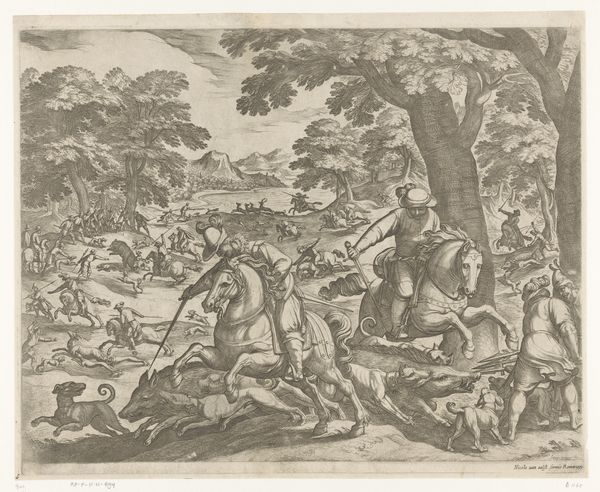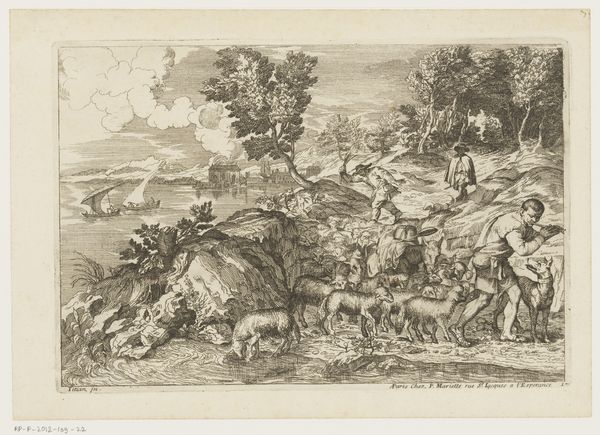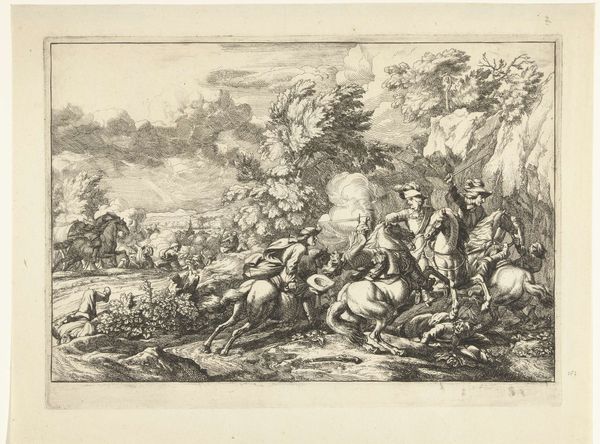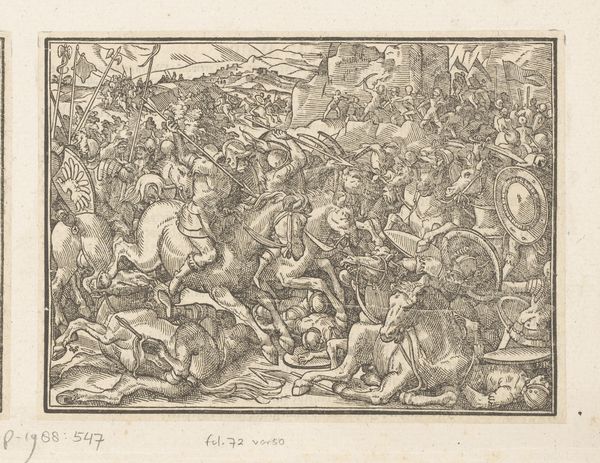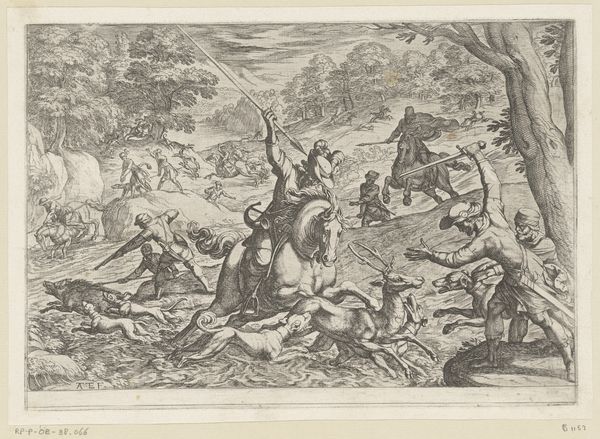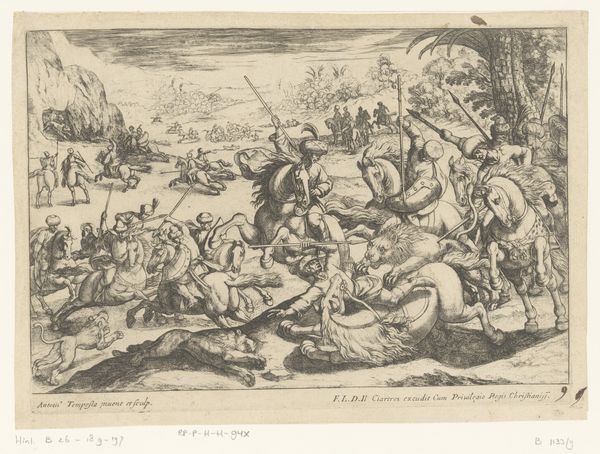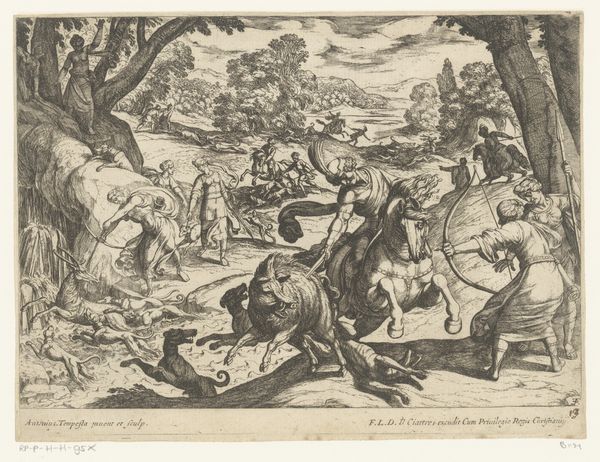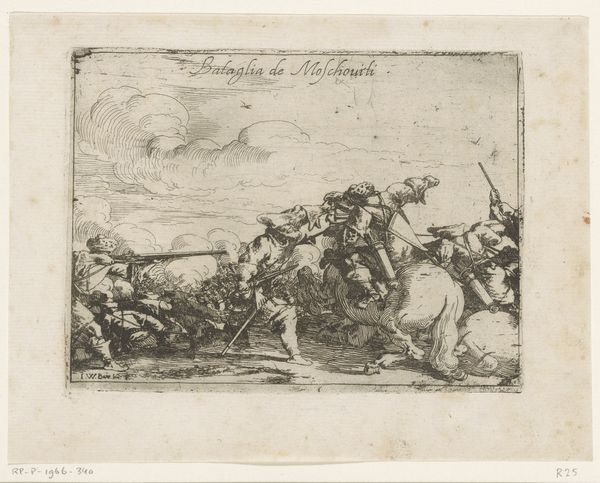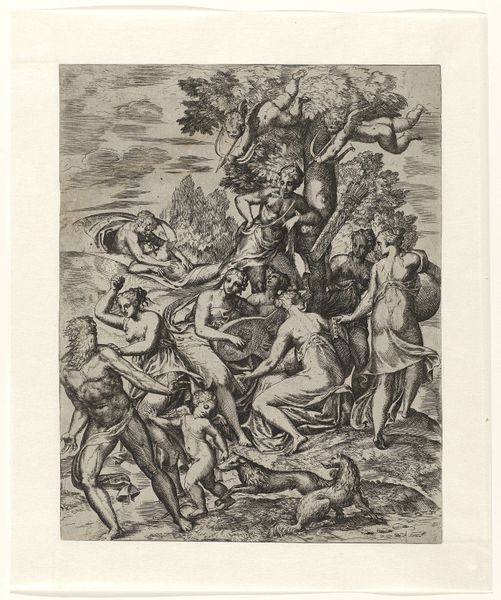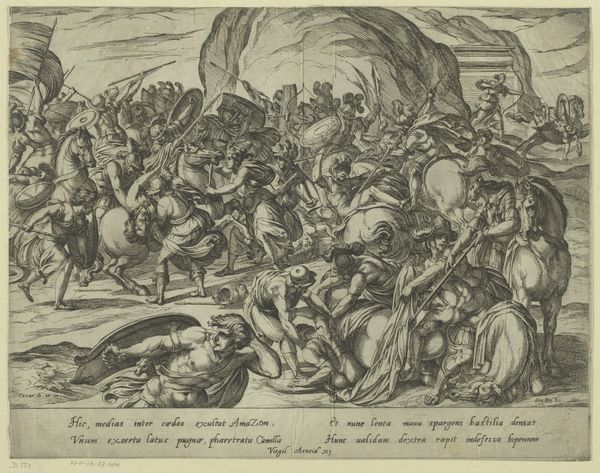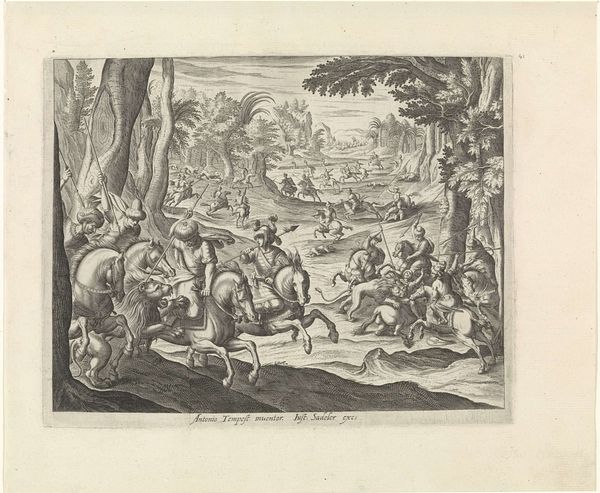
print, etching
#
baroque
# print
#
etching
#
landscape
#
figuration
#
line
#
history-painting
Dimensions: height 164 mm, width 205 mm
Copyright: Rijks Museum: Open Domain
Curator: Before us is "Strijd tussen Habsburgers en Turken in het Weense bos," or "The Battle between Habsburgs and Turks in the Vienna Woods," a print made by Romeyn de Hooghe in 1684. Editor: Wow. Chaos. Total, glorious chaos etched in fine lines. You can almost hear the horses screaming and the metal clashing. Is this meant to be a realistic depiction or something more allegorical? Curator: Primarily, this piece serves as a historical record rendered in the baroque style. The dynamism and intense activity certainly lean towards heightened drama. Look closely at the composition – see how the artist uses a dense foreground of intertwined bodies to draw you into the frenetic mid-ground and then finally a somewhat calmer, but still active, background. Editor: It’s definitely doing the job. My eye is darting everywhere. There's such detail, it feels both overwhelming and meticulously constructed at the same time. I’m guessing it’s an etching. Tell me about that. Curator: Precisely, this is etching. A method that allowed De Hooghe to create these extraordinarily detailed and complex scenes through the strategic use of acid to ‘bite’ the lines into a metal plate, creating an exceptional tonal range, from almost imperceptible marks to solid shadows. The artist employs dense networks of linear marks for modeling and textures which lend energy to this very tumultuous conflict. Editor: Looking at it, you can tell De Hooghe wanted to immerse the viewer fully. And despite being a print, the scale of action almost makes it feel like you’re on the battlefield yourself. It's a propaganda piece, of course? Curator: Undoubtedly. Such depictions bolstered morale and affirmed political agendas, lionizing the victors of the battles while illustrating very specific events. We see an imagined encounter, composed and choreographed as much as truthfully reported. The emphasis becomes the event’s symbolic weight, instead of faithful reproduction of events. Editor: So, we have art functioning as history lesson, but heavily biased. Even now, gazing into this little world, I feel a strange energy radiating. It's both disturbing and rather beautifully crafted in all of its gory detail. Curator: Indeed. Its power lies not just in the event it depicts but also in De Hooghe's capacity to turn political art into compelling viewing, centuries later. Editor: I’m still stuck on those frantic lines and all that baroque bluster. Very effective stuff.
Comments
No comments
Be the first to comment and join the conversation on the ultimate creative platform.
